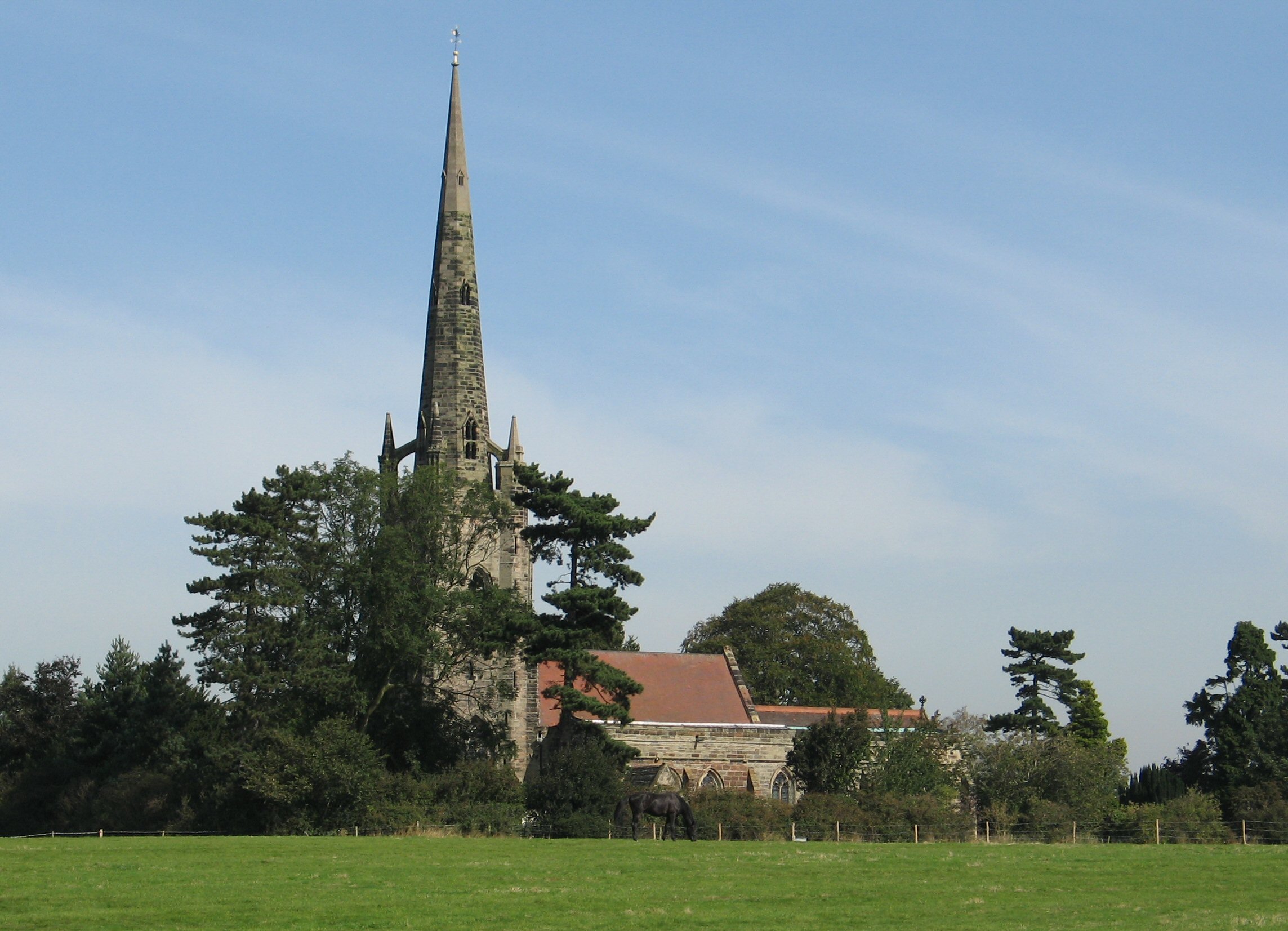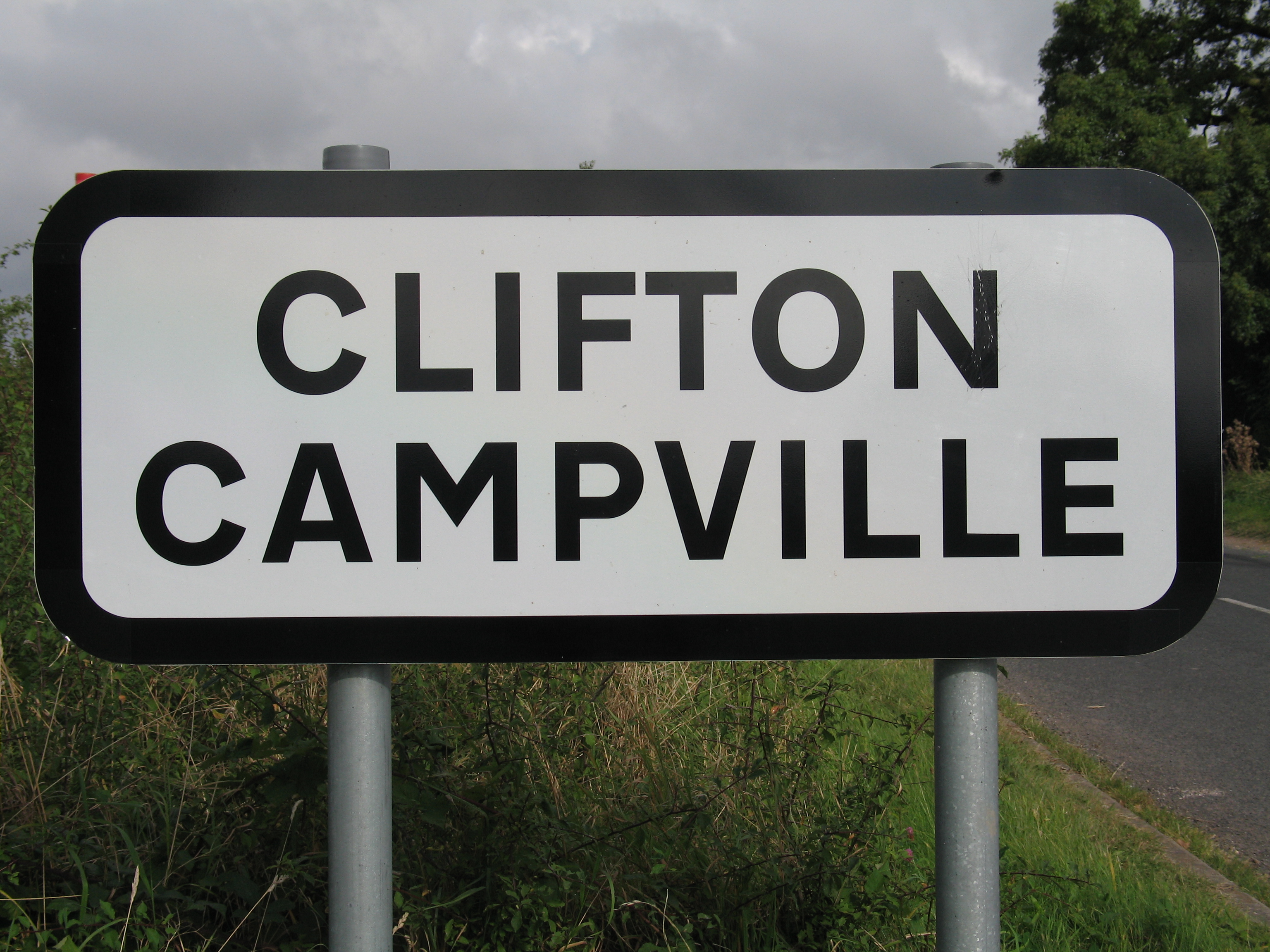

The
name “Clifton” is derived from Old English meaning “settlement on sloping
ground” while “Camville” was added in the Middle Ages to reflect the
land-owning Camville family. The source of the additional “p” is a mystery!
But Clifton Campville was first recorded in the Lichfield Episcopal
Registers for 1421-47 where the spelling is given as Clyfton Campvyle.
The village overlooks the River Mease and has developed along the
line of ancient Salt Street.
Little is known about the village until its mention in a charter granted in
942, and then in the Domesday Book in 1086, which records a Lord of the
Manor with 40 staff and a resident priest.
In the Middle Ages the present County of Staffordshire, together with
most other Midland counties, was part of the Kingdom of Mercia.
The Earls of Mercia held the land as tenants-in-chief of the
Sovereign, who, in those days, considered himself to be the owner of all
land in the country.
Consequently successive Earls of Mercia became chief Lords of the Manor of
Clifton.
It is probable that Cliftonians fought with King Harold at Stamford
Bridge, just outside York, prior to his defeat in 1066.
In time William the Conquerer became Chief Lord of the Manor of
Clifton. William was succeeded
as Chief Lord of the Manor by William II and then Henry I.
Henry was the last monarch to be connected to Clifton.
William Camville, who died around 1329, was the last of the Camvilles
to live at Clifton. It was
shortly after this that the village was known as Clifton Camville.
The rebuilding of the Church of Clifton Campville, on its present
magnificent scale, was started in 1361 during the 40 year tenure of Rector
Hugh Hopwas.*
Clifton Campville boasts several listed buildings including The Old
Rectory, Manor Farm, Hawthorne Cottage and Clifton Hall, on the eastern
fringe of the village.
The Green Man public house on Main Street is a 16th century coaching
inn that retains much of its original character, particularly its low
ceilings and exposed beams.
One of
the oldest buildings in Clifton Campville is the Village Hall on Church
Street. Originally a barn, it was used for many years as a school. The
schoolmaster lived in the attached house from which, it is reported, he was
able to maintain discipline during breaks by observing his pupils through a
hidden peep-hole in the dividing wall.
Both the school and the school house – the latter now in private hands -
have been restored recently in such a way that they contain all modern
comforts but still retain their original external appearance.
*This information
has been taken from “The Church and Manor of Clifton Campville” by Major R G
Reed which was published for the 6th Centenary of St Andrew’s
Church. In turn Major Reed
acknowledges basing his account on “The Story of Clifton Camville”, possibly
written by Henry John Pye in 1892.
